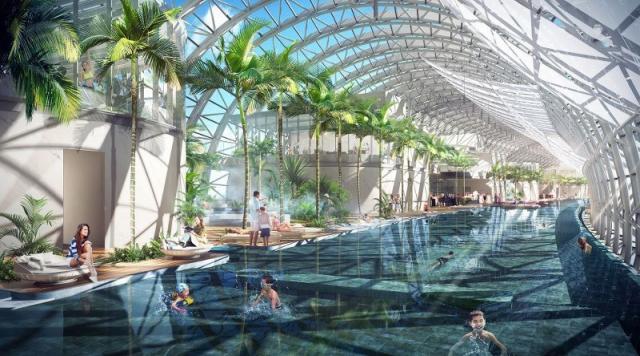Search the Community
Showing results for tags 'Chongqing'.
-

Journey to the West: First Steps in Southwestern China, Pt. 2
hollowataraxia posted a blog entry in MyAutoBlog
Note: Click here to read Pt. 1, where the journey began in Hong Kong. NEXT UP: CHONGQING Day 3, cont.: Dad had decided on the scenic route to Chongqing - train. We did not realise that the immigration process at the Hong Kong Kowloon West station involved both the Hong Kong and Chinese authorities, so we found ourselves in a rush to board the train (we boarded minutes before the scheduled departure). Through the eight-hour journey, the passing sights made me realise the diversity of China’s terrain, perhaps an Eastern equivalent to the US (ironically I’m the only one among the four of us to have never stepped on American soil). Arriving at Yuzhong district in a DiDi from Chongqing West Station, I was blinded by the lights of the hyper-modern landscape. The best part? Entering our hotel rooms to what I might call the best view I’ve seen from a room (only Scandic Ishavhotel compares), though I’m afraid I couldn’t do it justice with my camera (these photos are all stills from the videos I shot). Yitel Chongqing, our residence for our time there, is located above the tourist hotspot that is Hongya Cave. Reviews said it was noisy due to the crowds below, but staying on the highest floor (16th floor) meant the din was not as loud as at home in Singapore where random motorists rev their engines close to midnight. We then went out for dinner (or was it supper?), with attractions like the Chongqing Art Museum and the Jiefangbei CBD area surprisingly close to Yitel. At a food court, we had spicy dumplings among other things. Surprisingly bearable, coming from someone who can’t even take wēi là (mild spice) in Singapore, but it was probably because it was more numbing than spicy. Day 4: Our first full day in Chongqing. An arduous climb through Yuzhong District’s hilly terrain brought us to quite a number of attractions, from the Mountain City Path and Eighteen Stairs to Baixiangju and Raffles City Chongqing (yes it’s real, and it looks more like Marina Bay Sands) and back to our hotel, culminating in an hour’s wait for the lights of Hongya Cave to turn on. I unfortunately suffered a nosebleed throughout our hotpot dinner (as it usually goes for me in cold and dry places) and went back to my room for the rest of the night while my family went grocery shopping. Day 5: At my request, we took a day trip to Wulong Karst, having first seen some of its sights in Transformers: Age of Extinction. We woke up rather early (5.00am-ish) to meet our driver, who picked us up in her Hongqi E-QM5 EV. After a three-hour ride, we arrived at the entrance to the Longshui Gorge Geofracture. It took over an hour to traverse, arriving at the exit quite a distance away from where we started. We had lunch at a restaurant in the nearby town, and while the dishes were nice, my favourite was the rice cooked with potatoes that had a mild flavour. I enjoyed it so much I forgot to take a picture of it. We then headed to the Three Natural Bridges, which turned out to be a lot more massive than I imagined, having to strain my neck to look up at the top of the nearby formations. Also, it seems the Transformers movie was pretty well-appreciated for its tourism potential, the quality of the movie itself aside. At night, our driver dropped us off at Guanyinqiao, a popular shopping district, though we spent too much time eating that we only had a brief amount of time to walk around a mall before closing time. I was quick to snap some photos of the Xiaomi SU7 EV at the Xiaomi store in Paradise Walk Guanyinqiao just before the staff started bringing the shutters down. Day 6: While Christmas is not an official holiday in China, there were still some Yuletide vibes as we went about covering our remaining itinerary. The rooftop plaza of Kuixing Building was every bit as terrifying as it has been depicted in many videos. Liziba Station, a massively popular attraction on social media, turned out to be nothing particularly special as a long-time Bukit Panjang resident. Having lived near the now-defunct Ten Mile Junction LRT station when it was still in operation, the concept of a train going into a building is not as novel for me as it seems to be for most other tourists. On our way to our next stop, we entered a restaurant for lunch, and ordered tǐ huā soup, a popular Chongqing dish featuring pork knuckles in a collagen-rich broth that is recommended for those not used to the otherwise spicy cuisine. I’m not sure if it was just that restaurant, but it was just okay. The sour fish in comparison was better. Eventually, we arrived at Huangguan Escalator, the third longest in Asia. It takes about 2.5 minutes to complete a trip one way, connecting users to two different train stations at the top and bottom of a hill. This therefore makes it a form of public transport, requiring the purchase of tickets. Making up for the previous day’s tardiness, we went back to Guanyinqiao, which had a Christmas tree-shaped display and a pop-up store for who-knows-what. As daylight waned, we arrived at Xiahao Lane, another old town packed with tourists especially after its modernisation. The view of the Dongshuimen bridge did feel a bit reminiscent of the view in Damien Chazelle’s La La Land, which was how it was described by social media posts Dad had seen while researching, but the locals seemed to have no idea what we were talking about. CLOSING THOUGHTS In all, Chongqing was probably the highlight of the trip. Not that the other places were bad, but the hype around this “hyper-modern” city was real, and then some. I found myself surprised, impressed and eventually in awe as I realised that Chongqing still retained much of its traditional architecture while imbuing new life into the city with its 144 skyscrapers. It has become one of my favourite cities in the world despite only having scratched the surface of China's largest city by municipal boundary, and I would definitely recommend anyone interested to just go for it. Next up: Chengdu. ~ Wei Feng Images: Myself -
oddly familiar!!! but as we all know,thats how china culture is. just like how they have the cities of replicas. they have replica of paris, london.. and now our famed mbs spaceship. but instead of 3 towers like ours, they have 4. https://www.youtube.com/watch?time_continue=2&v=emqK3wasEX8 The megacity of Chongqing has added yet another extraordinary piece of architecture to its city skyline with a massive “sky corridor” that stretches across the top of four neighboring skyscrapers. Placed 250 meters above the ground, the 300-meter-long corridor is the most eye-catching part of the Raffles City Chongqing complex that is currently under construction at the confluence of the Yangtze and Jialing rivers. The complex has been designed by renowned Italian-Canadian architect Moshe Safdie who is also known for doing something similar with the design of the Marina Bay Sands in Singapore. Once it’s completed, the corridor will serve as a viewing deck while also boasting an infinity pool, sky gardens, and various eateries.
- 27 replies
-
- 3
-

-
- chongqing
- infinity pool
- (and 6 more)
-
The Straits Times The Straits Times Published on Jan 11, 2012 CapitaLand puts $4b in Chongqing project CapitaLand puts $4b in Chongqing project It is the property giant's largest in China to date By Kor Kian Beng CHONGQING - Singapore property giant CapitaLand has put down a $4 billion wager on the Chinese real estate market, signalling confidence in China even as many hold back amid fears of a recession this year. On Tuesday, the home-grown developer sealed an agreement with south-western Chongqing city to build an iconic mixed-used project designed by architect Moshe Safdie, the man behind the Marina Bay Sands integrated resort. Sitting on a 91,783 sq m prime riverfront plot between Chao Tian Men Square and Chongqing's traditional central business district in Jie Fang Bei, the 21.1 billion yuan (S$4.3 billion) development will be home to residential units, offices, shops, a hotel and serviced apartments, and is targeted to be completed by end-2017. With a total gross floor area of 817,000 sq m, the yet-unnamed project is CapitaLand's largest in China to date. The deal will help put the rising giant at the top of CapitaLand's markets, overtaking even Singapore. Copyright
- 8 replies
-
- billion
- investment
-
(and 1 more)
Tagged with:



